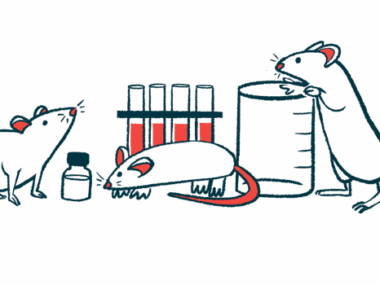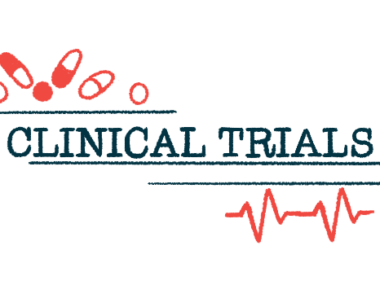Volixibat shows early promise for reducing PBC itching, fatigue: Data
Oral therapy candidate also exceeded safety, efficacy marks in PSC trial
Written by |

Daily treatment with Mirum Pharmaceuticals’ oral candidate volixibat significantly reduced itching — medically known as pruritus — and fatigue for adults with primary biliary cholangitis (PBC), according to new interim data from the Phase 2b VANTAGE clinical trial.
“The interim data from the VANTAGE study provide outstanding results in relation to what has been shown for treatment of pruritus in PBC,” Joanne Quan, MD, chief medical officer at Mirum, said in a company press release.
Based on these early results, VANTAGE (NCT05050136), which tested two volixibat doses, is now moving into a confirmatory phase with a selected dose of 20 mg, taken twice daily, with no changes to the study.
The VISTAS study (NCT04663308), a Phase 2b trial testing volixibat in people with pruritus due to primary sclerosing cholangitis (PSC), will undergo a similar move after the therapy exceeded prespecified safety and efficacy thresholds.
“With both VISTAS and VANTAGE advancing to enroll their confirmatory portions, we are excited about volixibat as a potential future option to help patients overcome one of the most prevalent and burdensome symptoms of these rare liver diseases,” Quan said.
VANTAGE and VISTAS trials now recruiting PBC, PSC patients with itching
Both VANTAGE and VISTAS are now enrolling new patients. The VANTAGE trial is recruiting up to 180 adults with PBC-related pruritus at sites in the U.S., Europe, and Israel, while VISTAS is seeking up to 200 PSC patients, ages 12 and older, with itching at sites in the U.S., Canada, Europe, and Israel.
Should final analyses recapitulate these positive interim findings, data from the trials could support regulatory applications seeking the therapy’s approval for each indication, Chris Peetz, Mirum’s co-founder and CEO, said in a company conference call.
Both PSC and PBC are characterized by chronic cholangitis, marked by inflammation in the bile ducts that carry the digestive fluid bile from the liver to the intestines. PBC mainly affects the bile ducts within the liver, while PSC can cause inflammation in the ducts both inside and outside the liver.
That inflammation may eventually lead to bile duct damage that slows or stalls bile flow, a condition called cholestasis. Subsequent bile acid accumulation in the liver gives way to serious liver damage, and its leakage into the bloodstream drives pruritus, an irritating sensation that makes a person want to scratch the skin.
Volixibat is an oral ileal bile acid transporter (IBAT) inhibitor that essentially works to suppress bile acid reuptake from the intestines back to the liver, and to boost bile acid excretion in stools.
In doing so, the therapy is expected to prevent bile acid buildup in the liver and bloodstream, thereby easing itching and other symptoms associated with PBC and PSC.
Volixibat found to significantly reduce PBC itching in VANTAGE trial
In VANTAGE, adults with moderate to severe pruritus caused by PBC were randomly assigned to receive oral capsules of either volixibat at doses of 20 mg or 80 mg or a placebo, twice daily for about six months.
The trial’s main goal is to evaluate changes in patient-reported daily itch, assessed using the Adult Itch Reported Outcome (Adult ItchRO) questionnaire. With scores ranging from 0-10, higher scores reflect worse itch.
Interim results, concerning six-month data from 10 participants in each dosing group, showed that either dose of volixibat led to significant reductions in pruritus, with ItchRO scores dropping by 3.82 points in the combined treatment group (20 mg or 80 mg).
Importantly, itch scores declined significantly more, by 2.32 points, in the combined treatment group relative to the placebo group, with similar benefits seen with either dose. Significant reductions in itching with volixibat were observed as early as week 1, according to Mirum.
The symptomatic burden in PBC is significant and often an underappreciated aspect of this disease, [and volixibat’s ability to ease itch and fatigue in the VANTAGE trial is] incredibly encouraging.
Regarding secondary goals, blood bile acids were reduced by more than 50% in three-quarters of volixibat-treated patients, and fatigue eased significantly after about four months in the therapy versus the placebo groups.
The most commonly reported adverse event with volixibat was mild to moderate diarrhea, affecting 77% of participants. No new safety signals were observed.
Based on the findings, the trial is progressing using the twice-daily 20 mg dose.
“The symptomatic burden in PBC is significant and often an underappreciated aspect of this disease,” and volixibat’s ability to ease itch and fatigue in the VANTAGE trial is “incredibly encouraging,” said Carol Roberts, president of the PBCers Organization, a patient support group.
Interim analysis in VISTAS trial conducted after 16-week assessments
With a similar design, VISTAS is testing the therapy candidate in PSC patients with moderate to severe pruritus. The interim analysis for this trial was conducted when 42 participants completed their 16-week, or approximately four-month assessments.
According to Quan, speaking during the conference call, an independent data review committee deemed that the VISTAS study should continue as planned with the twice-daily 20 mg dose.
“This signifies that the selected dose surpassed our prespecified minimum criteria for efficacy and safety,” Quan said, adding that enrollment for the second half of the study is expected to be completed by the end of this year.
Kris Kowdley, MD, an investigator on both VANTAGE and VISTAS, called the trials’ interim results “very impressive as they confirm the potential of volixibat in targeting bile acids in PBC and PSC.”
“I look forward to seeing the final data with the goal of having additional therapies available to address the burden of disease in adult cholestasis,” Kowdley added.
After completing the main six-month portion of either VANTAGE or VISTAS, patients will have the option of entering an open-label extension phase, in which all will receive volixibat for up to two years.









